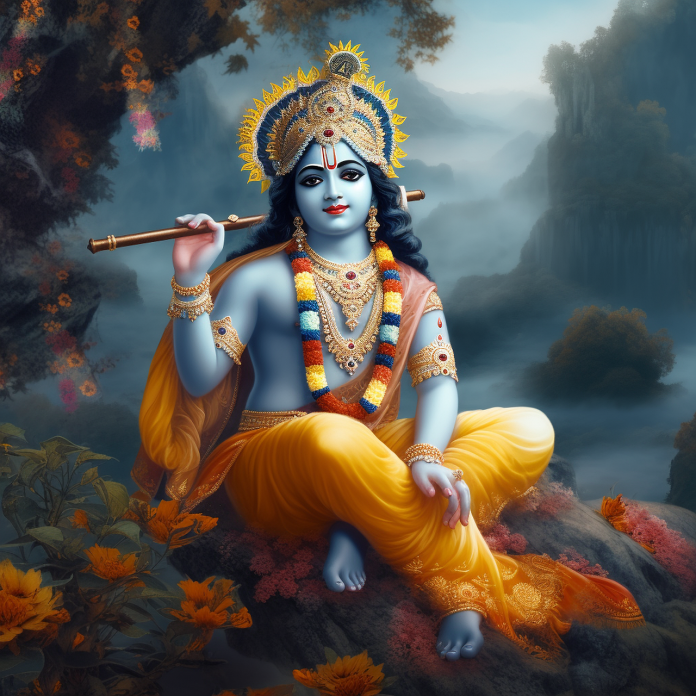Janmashtami is one of the most cherished Hindu festivals, celebrated with devotion and grandeur to mark the birth of Lord Krishna. Across India and many parts of the world, devotees rejoice in spiritual activities, kirtans, fasting, and most importantly, decorating the idol of Bal Krishna with beautiful attire. The day is not just about rituals but about rekindling our connection with divine values and teachings, just like those found in the Bhagavad Gita.
The notes in the image above reflect the timeless messages of the Gita Updesh, reminding us of detachment, karma, and the immortality of the soul. These teachings lie at the heart of Janmashtami. As we celebrate the birth of Lord Krishna, it becomes essential to understand not only the Janmashtami pooja vidhi but also the deeper purpose behind the devotion.
Understanding the Janmashtami Pooja Vidhi
The Janmashtami pooja vidhi is a sacred process that devotees follow to welcome Lord Krishna into their homes. It typically begins at midnight, believed to be the hour of Krishna’s birth. The steps of the pooja include:
-
Purifying the space and self – Devotees clean their homes and set up a puja altar with idols or pictures of baby Krishna.
-
Placing Laddu Gopal in a cradle – The child form of Krishna, often called Laddu Gopal, is dressed in a fresh Janmashtami poshak and placed in a beautifully decorated cradle.
-
Offering items for the pooja – These include tulsi leaves, makhan-mishri, butter, fruits, incense sticks, and sweets.
-
Reciting Krishna mantras and bhajans – Devotees sing devotional songs, recite verses from the Gita, and tell stories of Krishna’s childhood.
-
Performing the aarti – At midnight, devotees perform aarti and gently swing the cradle of Laddu Gopal, symbolizing the birth of Krishna.
It is important that all Janmashtami pooja vidhi steps are done with devotion and cleanliness. This pooja is not just a ritual, but an act of surrender, just as the teachings of Krishna guide us in the Gita.
Dressing Laddu Gopal – The Joy of Handmade Poshak
One of the most endearing parts of the festival is adorning the Krishna idol in traditional clothing. These days, Janmashtami handmade dresses are in high demand as they add a personal and loving touch to the celebration. Crafted by skilled hands, these dresses come in a variety of colors, fabrics, and designs, reflecting the playful and divine essence of Bal Krishna.
Among all the color choices, yellow stands out. The Janmashtami Krishna poshak yellow is a favorite because yellow symbolizes happiness, energy, and spiritual growth. When Laddu Gopal is dressed in yellow, it not only pleases the eyes but also aligns with Krishna’s traditional attire mentioned in scriptures.
Choosing the Perfect Janmashtami Poshak for Laddu Gopal
Whether you are performing Janmashtami pooja vidhi at home or in a temple, selecting the right outfit for the deity is important. A Janmashtami poshak for Laddu Gopal includes:
-
A yellow dhoti or skirt with golden borders
-
A matching upper cloth (angvastra)
-
A mukut (crown), bansuri (flute), and jewelry like armlets and anklets
-
A floral garland or fresh flower decorations
These are not just decorative items but symbolic offerings of love and reverence. A well-chosen Janmashtami Krishna poshak yellow made of silk or cotton brings out the beauty of the idol and honors the spirit of the festival.
Yellow Krishna Poshak for Temple Deities
In temples, Krishna idols are generally larger and require more intricate outfits. The Krishna poshak for temple is often heavily embroidered, adorned with sequins and mirror work, and paired with stunning ornaments. Volunteers and temple priests spend hours preparing the idol, ensuring every fold of the cloth and every flower is in place. This process is a form of seva – selfless service to God.
Yellow Dhoti Kurta for Krishna – A Symbolic Dress for Kids Too
Apart from idol decoration, Janmashtami is celebrated by dressing young boys as Krishna and girls as Radha. The yellow dhoti kurta for Krishna is a staple outfit for kids, reflecting Krishna’s traditional form. Many schools and communities organize fancy dress competitions where children recite shlokas, sing bhajans, and perform dance dramas.
This tradition carries forward the cultural values and makes children a part of the celebration, just as the Gopis once celebrated Krishna’s divine presence in Vrindavan. It brings to life the phrase from the notebook – “छोटी राधिका जी एक गोपी की तरह अपने जुड़े बांधी,” which beautifully captures the innocence and devotion of little Radhas on this day.
Spiritual Significance Behind the Celebration
As the notes from the Gita in the image say:
-
“कर्मण्येवाधिकारस्ते मा फलेषु कदाचन” – Do your duty without attachment to the result.
-
“आत्मा अमर होती है” – The soul is immortal.
These teachings align with Janmashtami, reminding us that Lord Krishna was not just a divine child but also the cosmic teacher of dharma and detachment. His birth marks the triumph of dharma over adharma, and his life continues to guide millions in their spiritual journey.




